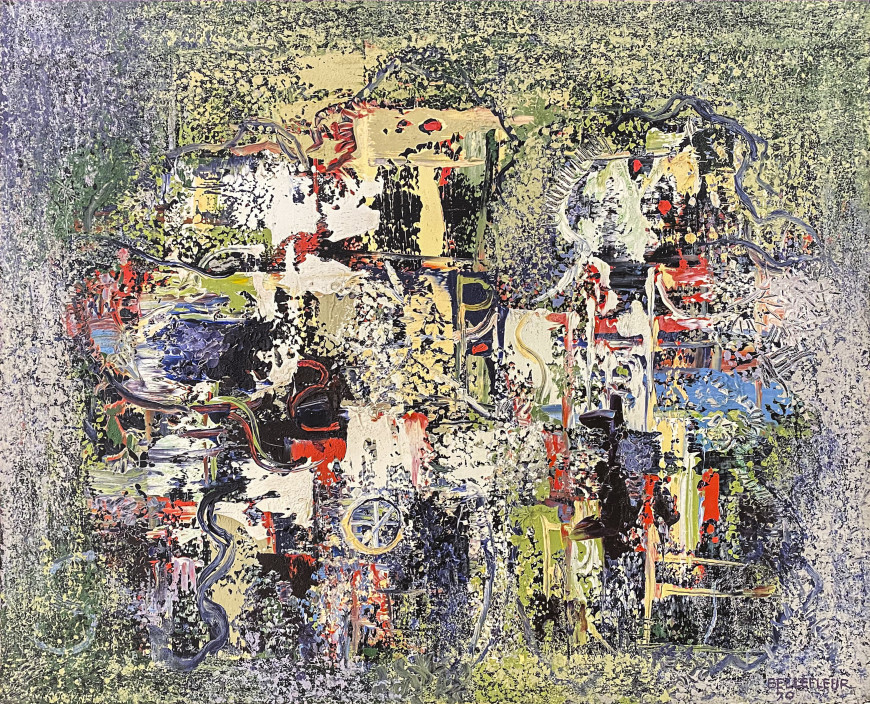-
Œuvres d'art
Léon BellefleurLes Saltimbanques, 19701910-2007Oil on canvas - Huile sur toile25 5/8 x 31 7/8 in
65 x 81 cmSoldInscriptions
signed and dated,‘BELLEFLEUR / 70’ (recto; lower right); titled, signed, dated and inscribed, ‘LES SALTIMBANQUES / BELLEFLEUR / 70 / huile 25F’ (verso; center)Provenance
Thielsen Gallery, London, Ontario.
Joyner Fine Art Inc., Toronto, 22 November 1988, lot 114.
Estate of Mr. Andrew Harper, Montreal.
The saltimbanque of the circus has long inspired artists, maybe the most celebrated of them being Pablo Picasso.
— Only two years before Léon Bellefleur painted Les Saltimbanques, 1970 he had been celebrated with a retrospective at the National Gallery of Canada, a rare honour for a living artist. Les Saltimbanques exemplifies Bellefleur’s highly original style and his outstanding talent as a colourist. It also has a particularly wonderful impasto, with the paint applied thickly and spontaneously, sometimes rising from the surface, having been dragged by his spatula or brush.
Léon Bellefleur was actively involved in the abstract art scene in Quebec from its early stages. Along with a number of his contemporaries, Bellefleur was interested in the surrealist preoccupation with the subconscious as a source of inspiration.
He was an original member of the avant garde group Prisme d'Yeux, founded by Alfred Pellan in 1948. He was aware of the radical developments of the rival Automatistes, and in the late 1940s he found inspiration in the work of European abstract painters, especially Wassily Kandinsky and Joan Miró.
Bellefleur was known to use French stretcher sizes, even when painting in Canada. This explains the 25F inscribed on the back of Les Saltimbanques. F, standing for “figure”, is traditionally deployed in a portrait orientation. Bellefleur often used F-sized canvases in a landscape format, as he did in the case of this luscious composition.
Galerie Walter Klinkhoff purchased paintings from Léon Bellefleur from the late 1950s and last held a one-man exhibition in 1985. Bellefleur’s work can be found in all the major Quebec-based museums, the National Gallery of Canada, and the McMichael Collection.






